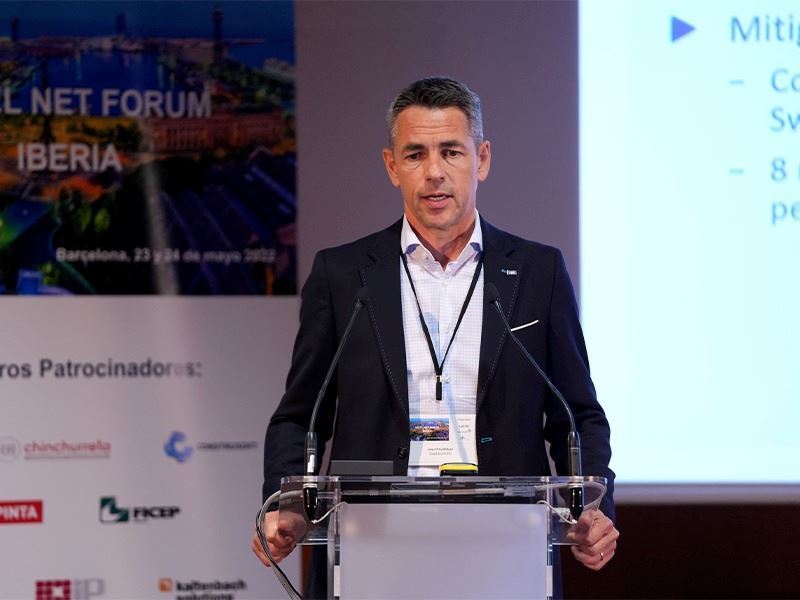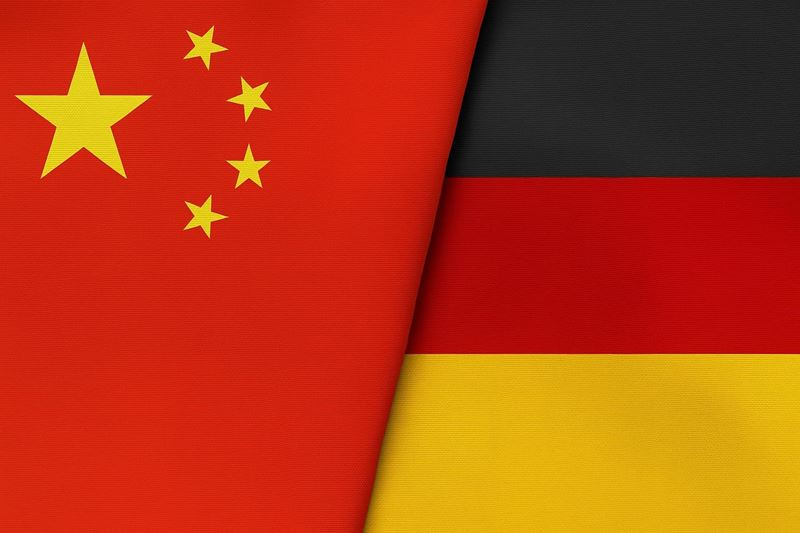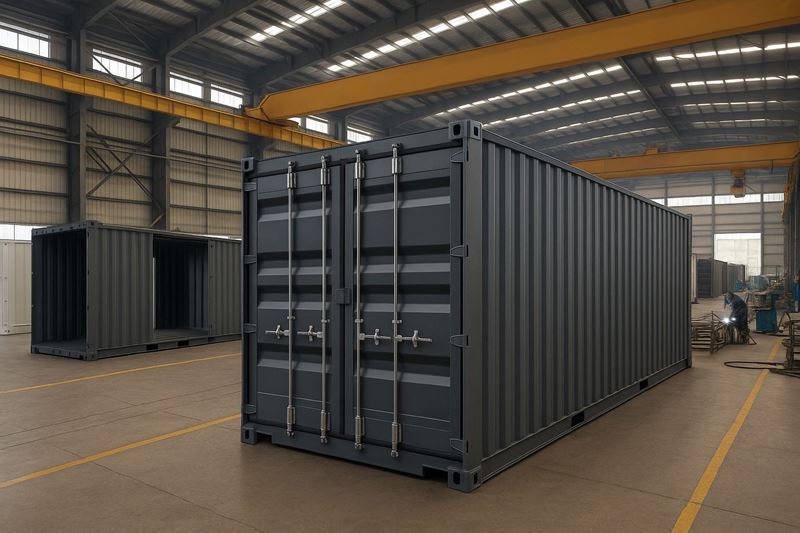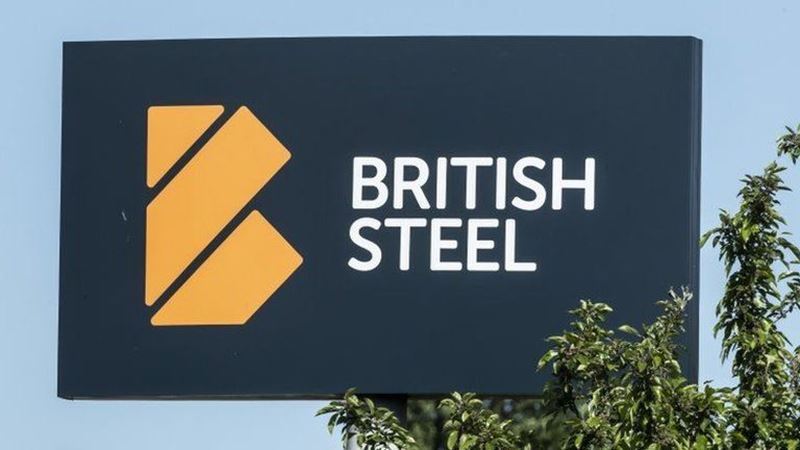Josu Pina Bilbao, who will also make important statements at the Green Steel Panel at the Steel Summit 2025 conference, touched on new regulations such as the EU's Carbon Border Adjustment Mechanism (CBAM), the Industrial Decarbonization Bank initiative, green steel labeling efforts and recycled content targets. Bilbao explained in detail SSAB's green transformation investments, the fossil fuel-free production process with HYBRIT® technology and how they aim to lead their supply chain in line with Europe's net zero targets.
“Our decarbonization targets are in line with the Paris Agreement”
Could you kindly elaborate on the competitive advantages of environmentally responsible steel production within the European Union market? How does SSAB envisage capitalizing on these opportunities?
Environmentally responsible steel production, will become more competitive in relation to high carbon emitting steel production in the EU thanks to the ongoing directives and regulations for energy intensive industries, like EU-ETS and CBAM. Our decarbonization targets and roadmap, are aligned with 1,5º C Paris agreement and SBTi verified: We commit to reduce absolute Scope 1, 2 and 3 GHG emissions, from 2018 base year, 48% by 2033, and 93% by 2045 (reaching Net-Zero GHG across the value chain by 2045). Our climate targets should enable us to be prepared and benefit from the advantages and opportunities of the growing decarbonized steel market.
“The new plant is planned to start production in 2028”
In what ways do you believe significant investments, such as the Luleå and Raahe projects, contribute to the ongoing transformation of the European steel industry?
Since we started back in 2016 with HYBRIT joint venture investment, we have taken the lead in the green transformation of integrated steel production in Europe and continue with firm steps in that direction. Namely, in our Nordic transformation roadmap we have three major steps ahead. First investment is a brownfield project in Oxelösund to replace current blast furnaces and coke plant, with EAF production and save approx. 1,5 M tons of CO2 per year. It is under construction and starting in 2026. Second big investment is a green field project in Luleå, where we plan to build a new mini-mill which will source fossil-free sponge iron and recycled scrap to produce 2.5 million tons of decarbonized steel products. Consequently we’ll be closing down blast furnace and coke production, saving around 4 Million tons of CO2 per year. In addition we’ll be expanding our product range with a broader offering of emission-free products, grades, dimensions and quality and keeping our current specialty and premium product strategy. The new mini-mill is expected to start production in 2028. The third investment will come in Raahe, Finland, where we plan to also shut down blast furnace and coke ovens and build a fossil-free steel production reducing also around 4 Million of CO2 per year.
The EU is on track to create a carbon-free economy
Would you be so kind as to share how SSAB's strategic initiatives are being tailored to align with the European Union's climate objectives? What measures is the company considering to ensure harmonization with these goals?
EU keeps moving in the right direction to create a decarbonized economy across all industries and segments. With the Green deal came several directives and initiatives, which are being deployed gradually, and which are evolving based also on related developments in the world.
Recently announced EU Steel and Metals Action Plan (SMAP) to accelerate green steel development through a mix of initiatives:
- CBAM expansion: The EU will assess extending CBAM to some downstream steel and aluminum products by Q4 2025 to prevent circumvention.
- Anti-circumvention measures: The "melted and poured" rule is under evaluation to trace metal origins and close trade loopholes.
- Decarbonization Funding: Creation of 100B€ Industrial Decarbonization Bank, Hydrogen & EAF incentives to focus on H₂-DRI and electrification (cost-share grants % under evaluation),
and EU guidance to lower energy taxes. - Recycled content targets: Under study for construction and automotive steel, with a Q4 2026 feasibility report.
- Green steel labeling: A voluntary carbon-intensity label launches in 2025 to boost market demand.
- Sustainable procurement: EU will introduce criteria favoring clean steel in public and industrial contracts.
We follow up closely the EUs evolving initiatives and plans to reach the end goal, which hasn’t changed: Net Zero GHF emission by 2050. We want to be prepared and a step ahead, and make sure we are aligned in advance within the set interim milestones and related regulations. We also follow local country and industry specific legislation, and work together with our customers to be front runners in the race to decarbonize the steel supply chain.
We'd be very interested to hear about the innovative methodologies SSAB is embracing in the development of steel products with minimal or zero carbon dioxide emissions.
We started producing fossil-free steel in pilot scale back in 2021. Fossil free means that the steel has been created with virtually no fossil carbon emissions. The first step in making SSAB Fossil-free™ steel is to reduce iron ore into iron by removing the oxygen. This has traditionally been done using coal and coke in the blast furnace process. However, this step will now be done using hydrogen according to the HYBRIT® technology. Fossil-free electricity will be used to produce hydrogen from water via electrolysis. The byproduct of this process is water, not CO2. The resulting product of the HYBRIT process is crude steel (sponge iron) which is then melted in an electric arc furnace. Across the entire process, only fossil-free electricity and fuels will be used – resulting in fossil-free steel as the end-product.
In 2023 we introduced SSAB Zero™ to the market. It’s steel made using recycled steel (scrap) and fossil-free energy. It has virtually zero fossil emissions during steel production, without mass balancing or allocation of emission reductions or carbon emission offsetting. It is our way to produce our existing steel grades and products with significantly lower carbon footprint. The two different routes to produce our distinctive decarbonized steels, have served as a great learning experience in sponge iron and recycled steel making. We continue to develop more and more specific products according to our customer needs
“We want to lead the entire industry to a fossil fuel-free future”
In your expert opinion, could SSAB's transition towards fossil-free steel production serve as an inspirational model for other players in the industry?
As an innovator of fossil-free steel, SSAB is confident that all steel producers will, in time, replace their fossil-fuel based processes with fossil-free technology. SSAB shares the new technology by publishing research reports, running public webinars, participating in expert conferences worldwide and arranging knowledge-sharing events for the steel and mining industry. Whether or not other steel suppliers will use the same technology, we hope that we will demonstrate and inspire the rest of the steel industry to go fossil-free.
How is the growing market demand for environmentally sustainable steel influencing SSAB's production paradigms and supply chain strategies?
In order to speed up the decarbonization, collaboration is key between policy makers, industry bodies, steel producers, distributors and end users. For example EC is bringing together the key stakeholders across the steel supply chain in Europe to tackle the different challenges faced with decarbonization and competitiveness of different industries.
Another area to increase collaboration is with industry segment regulatory bodies. For example segment trade associations or country specific standards, setting carbon footprint and recycled content as a design parameters with evolving minimum requirements. Finally, many companies are also stepping up ahead of legislation to set more ambitious sustainability targets. We partner up with such companies which share similar goals to SSAB, working closely to promote and develop a fossil free supply chains in different industries. We have many examples and testimonies how our low emission steels hep our customer reach their goals.










Comments
No comment yet.